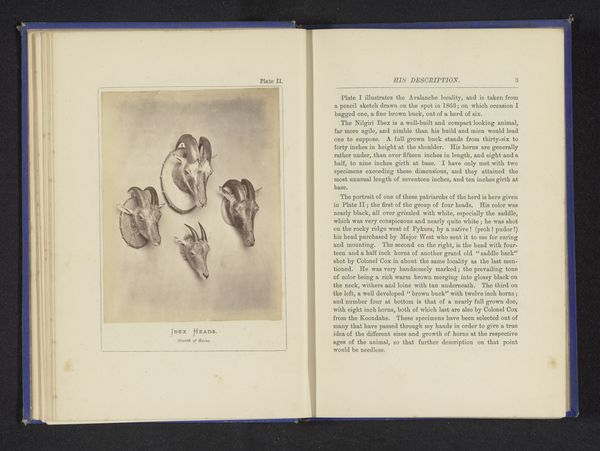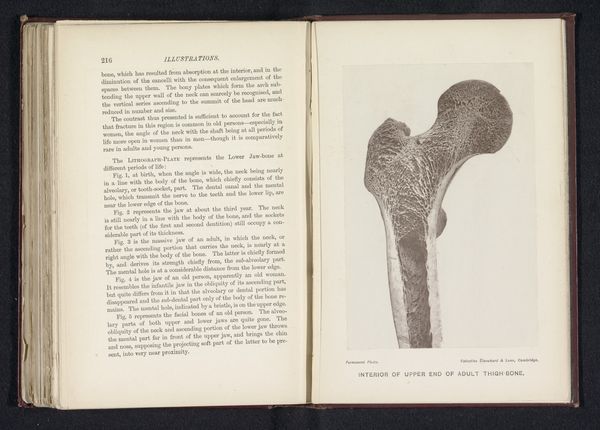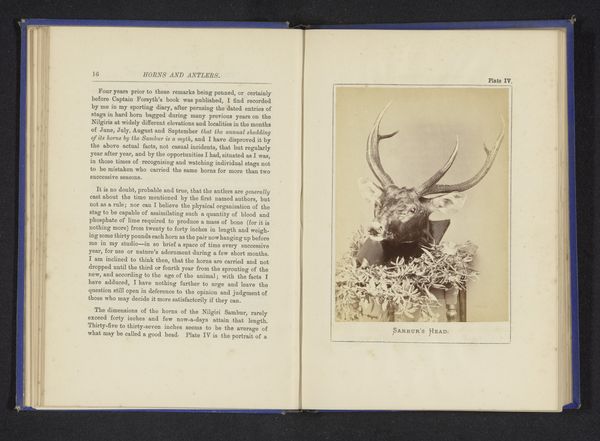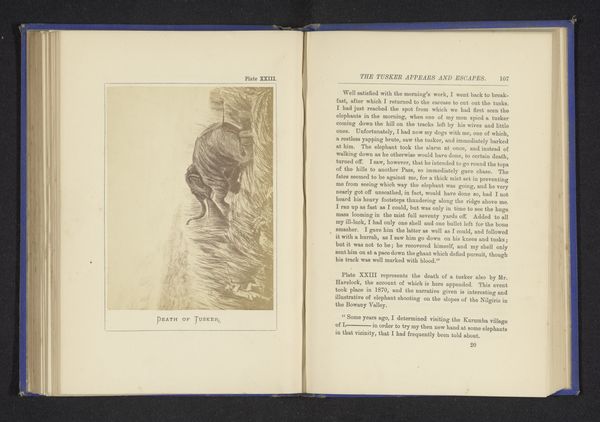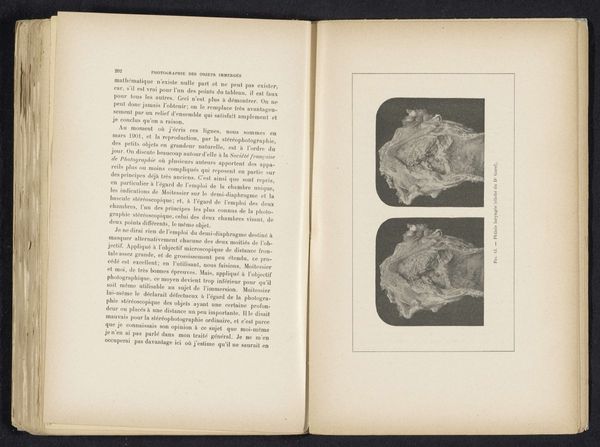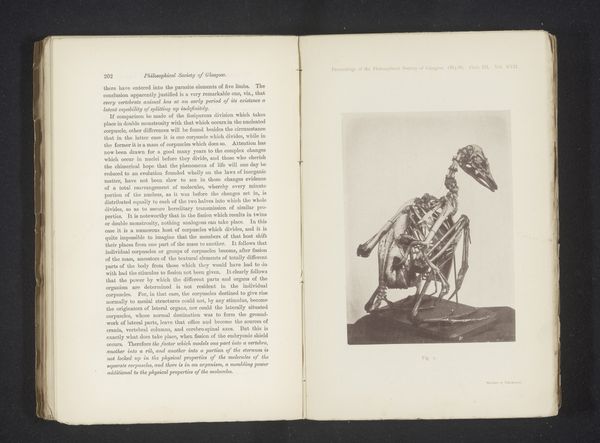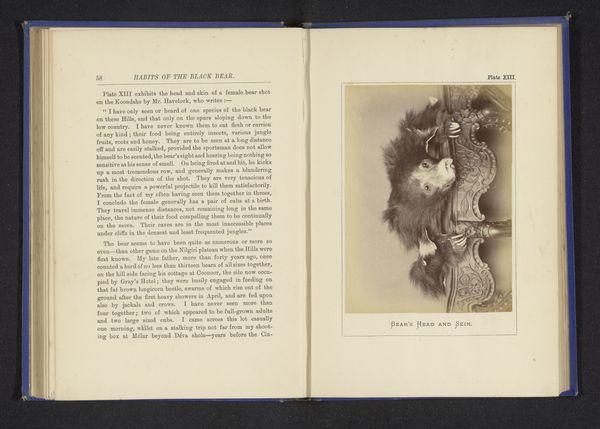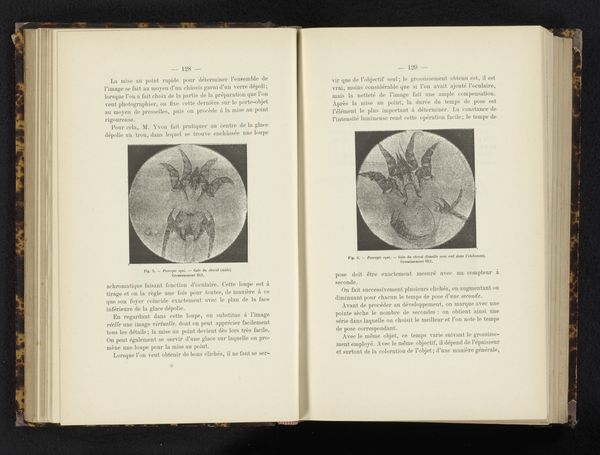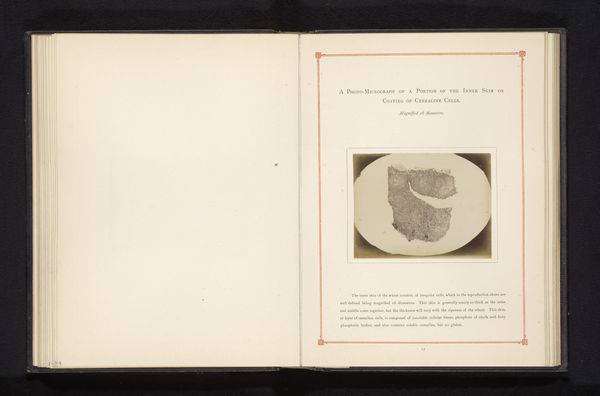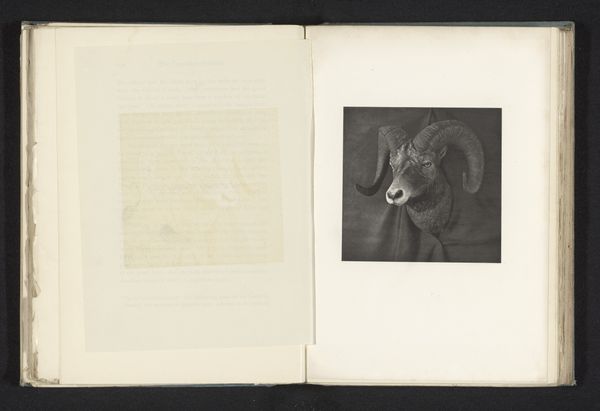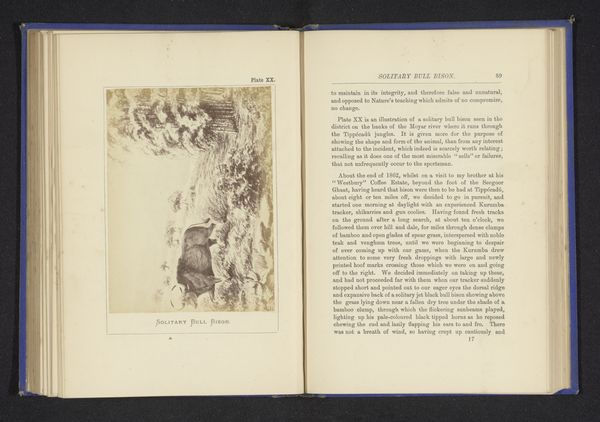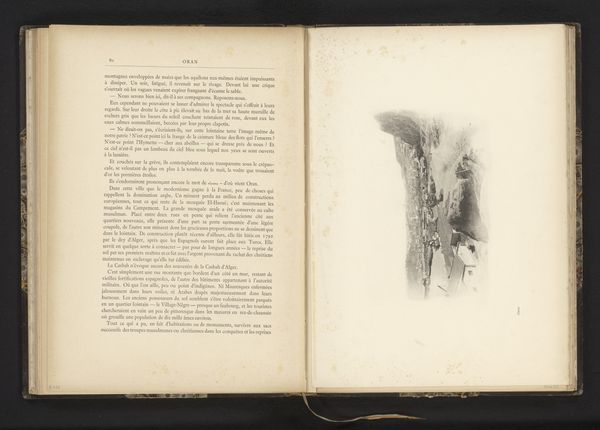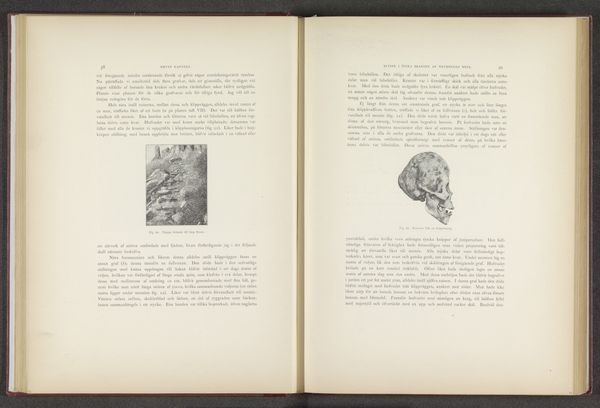
print, photography, gelatin-silver-print
#
portrait
#
still-life-photography
# print
#
photography
#
gelatin-silver-print
Dimensions: height 132 mm, width 98 mm
Copyright: Rijks Museum: Open Domain
Editor: Here we have a gelatin-silver print titled "Opgezette kop van een bizon," or "Stuffed Head of a Bison," created sometime before 1880, credited to Nicholas & Co. and held at the Rijksmuseum. It’s… unsettling. There’s a certain raw starkness to it. What strikes you most about this work? Curator: What immediately catches my attention is the means of production – gelatin-silver print, a chemical process. The use of photography at this time was often about documentation, aligning with scientific or even colonial ambitions. Consider the material cost involved, the silver used, and the labor in producing a seemingly simple image. Were these images circulated widely, and if so, to what social strata? The act of photographing a ‘stuffed head’ itself denotes a transaction—commodification perhaps. What purpose did this object serve? Editor: That's an interesting point – it’s like the animal becomes an artifact through this photographic process. Almost a pre-cursor to wildlife photography or studies. Was the photograph intended to have a scientific or artistic purpose, or simply to commemorate the hunt? Curator: Those classifications, scientific or artistic, become blurry when examining material practice. Think of the labour of taxidermy too, fixing a once-living thing into an object of study, a symbol of human mastery. Photography extended that reach, providing repeatable documentation. Editor: So you’re saying we can read it not just as a portrait of a bison, but a portrait of a relationship between humans and the natural world. Curator: Precisely. By focusing on the materials and the mode of production, the layers of meaning become richer. What does mass producing these sorts of photographs and prints mean? Was it a popular trend? What does the access, or lack thereof, to this media tell us about a changing culture at the time? Editor: I hadn’t considered how deeply embedded it was in practices of labor and resource extraction. Looking at it now, it speaks volumes about consumption and control. Thanks, I will think about this a lot more now. Curator: Likewise, the layers here offer fresh perspectives each time.
Comments
No comments
Be the first to comment and join the conversation on the ultimate creative platform.
